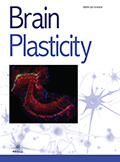Authors: Maxa, Kaitlin M. | Hoffman, Carson | Rivera-Rivera, Leonardo A. | Motovylyak, Alice | Turski, Patrick A. | Mitchell, Carol K. C. | Ma, Yue | Berman, Sara E. | Gallagher, Catherine L. | Bendlin, Barbara B. | Asthana, Sanjay | Sager, Mark A. | Hermann, Bruce P. | Johnson, Sterling C. | Cook, Dane B. | Wieben, Oliver | Okonkwo, Ozioma C.
Article Type:
Research Article
Abstract:
Background: There is increasing evidence that vascular disease risk factors contribute to evolution of the dementia syndrome of Alzheimer’s disease (AD). One important measure of cerebrovascular health is pulsatility index (PI) which is thought to represent distal vascular resistance, and has previously been reported to be elevated in AD clinical syndrome. Physical inactivity has emerged as an independent risk factor for cardiovascular disease. Objective: This study aims to examine the relationship between a measure of habitual physical activity, cardiorespiratory fitness (CRF), and PI in the large cerebral vessels. Methods: Ninety-two cognitively-healthy adults (age = 65.34±5.95, 72% female) enrolled
…in the Wisconsin Registry for Alzheimer’s Prevention participated in this study. Participants underwent 4D flow brain MRI to measure PI in the internal carotid artery (ICA), basilar artery, middle cerebral artery (MCA), and superior sagittal sinus. Participants also completed a self-report physical activity questionnaire. CRF was calculated using a previously-validated equation that incorporates sex, age, body-mass index, resting heart rate, and self-reported physical activity. A series of linear regression models adjusted for age, sex, APOE4 status, and 10-year atherosclerotic cardiovascular disease risk were used to analyze the relationship between CRF and PI. Results: Inverse associations were found between CRF and mean PI in the inferior ICA (p = .001), superior ICA (p = .035), and basilar artery (p = .040). No other cerebral vessels revealed significant associations between CRF and PI (p≥.228). Conclusions: Higher CRF was associated with lower PI in several large cerebral vessels. Since increased pulsatility has been associated with poor brain health and reported in persons with AD, this suggests that aerobic fitness might provide protection against cerebrovascular changes related to the progression of AD clinical syndrome.
Show more
Keywords: Cardiorespiratory fitness, Alzheimer’s disease, pulsatility index, cerebrovasculature, hemodynamics
DOI: 10.3233/BPL-190096
Citation: Brain Plasticity,
vol. 5, no. 2, pp. 175-184, 2020





